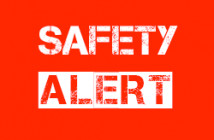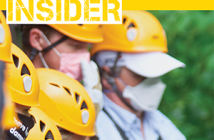Outsideonline’s story, “Just How Dangerous Are Zip Lines?” highlights many of the issues that other zip line accident reports across the U.S. cite. It focuses on a single accident, but cites a variety of broader statistics and factoids.
Unlike a lot of other reports, though, this one is from Outside, one of the most respected if not revered publications in outdoor adventure, and one that is not generally squeamish about injury. It understands that when people go adventuring, things can happen.
So Outside’s sense of alarm is a message to the zip line industry. This is a magazine based on risk-taking. Yet it understands that zip line guests should expect guides to safeguard the zip line experience, just as climbing, rafting, and paddling guides look out for their charges. It even compares zip line injuries to those in amusement parks, implying that zip lines should be as low-risk. If Outside doesn’t understand the differences between a zip line and a roller coaster, can we expect the general public to be more discerning?
Outside’s Brendan Borrell researched his story well. Unfortunately, that meant he discovered and quoted the 2015 injury study presented in the American Journal of Emergency Medicine, a study that fails to differentiate professional from amateur operations or to account for the explosive growth in zip lines over the period. Instead, the study simply charted a ten-fold rise in zip line injuries over a 20-year period, without explaining the reasons for the rise.
Of course, that rise largely reflects the rapid increase in zip line installations overall, including many backyard operations, and does not mean that individual zip lines are becoming more dangerous. In fact, the study reported that a large number of injuries stemmed from backyard operations, not commercial or experiential operators. Regardless, to the average reader (or journalist), the rise in injuries appears drastic, and appears to implicate professional operators, not just DIY amateurs.
As more than one seminar at the recent ACCT Conference said, the increased popularity of aerial parks and zip lines has led to greater visibility. And when accidents happen, they lead to increased scrutiny. That will surely continue. The lack of accurate statistics about where zip line injuries take place, along with an evolving regulatory environment with great variation from state to state, will fuel speculation about the effectiveness of current regulations and standards. Clearly, the industry—both the experiential and commercial sides—needs better data with which to defend and explain itself.
More importantly, the Outside report demonstrates once again the need for rigorous, documented training of guides, and adherence to strict operating procedures. The accident at the core of Outside’s story stemmed from the failure of two guides to make sure the line was clear before sending the next guest. That failure to communicate is not a new story. And while we can explain that by saying “people make mistakes,” that in no way excuses it. Operators must train staff rigorously and provide the oversight needed to instill consistent operating practices.





